|
Most doctors in Taiwan during the Qing Dynasty, except for some missionaries who practiced Western medicine, studied traditional Chinese medicine. Most of these traditional doctors could not cure diseases or infections such as malaria, cholera, dysentery, and typhoid. In 1899, the colonized government established the first modern medical education institution, the Medical School of the Taiwan Government General, to execute hygienic policies, control epidemics, cultivate Taiwanese doctors, and promote the development of medicine on the island.  Figure 1: The Medical School of the Taiwan Government General. When it was first established, the Medical School used part of the Taipei Hospital as its temporary campus. The formal campus, a two-floor building with tile roof and brick wall, was constructed in 1913. The Medical School was located in today’s 228 Peace Memorial Park, Taipei.
Source: Identifier: T020302_05_0442, Michael H.Finegan Collection, Taiwan Archival Information System The Medical School of the Taiwan Government General accepted Taiwanese students who graduated from public elementary school. It required one foundation year and four years of degree courses. During the colonial period, the Medical School and National Language School of the Taiwan Government General were the most prestigious schools for Taiwanese. Some people even called them “the Oxford and Cambridge of Taiwan.” However, the Medical School had a lower standing than those in Japan that accepted high school graduates. Since the island lacked a complete educational system during the first years of colonization, the medical school in Taiwan was less competitive than those in Japan. Although graduates received a medical certificate issued by the Taiwan Government General, they could only practice medicine in Taiwan. In contrast, graduates who received a medical certificate issued by the Japanese government could practice medicine in areas of Japan as well as Taiwan. 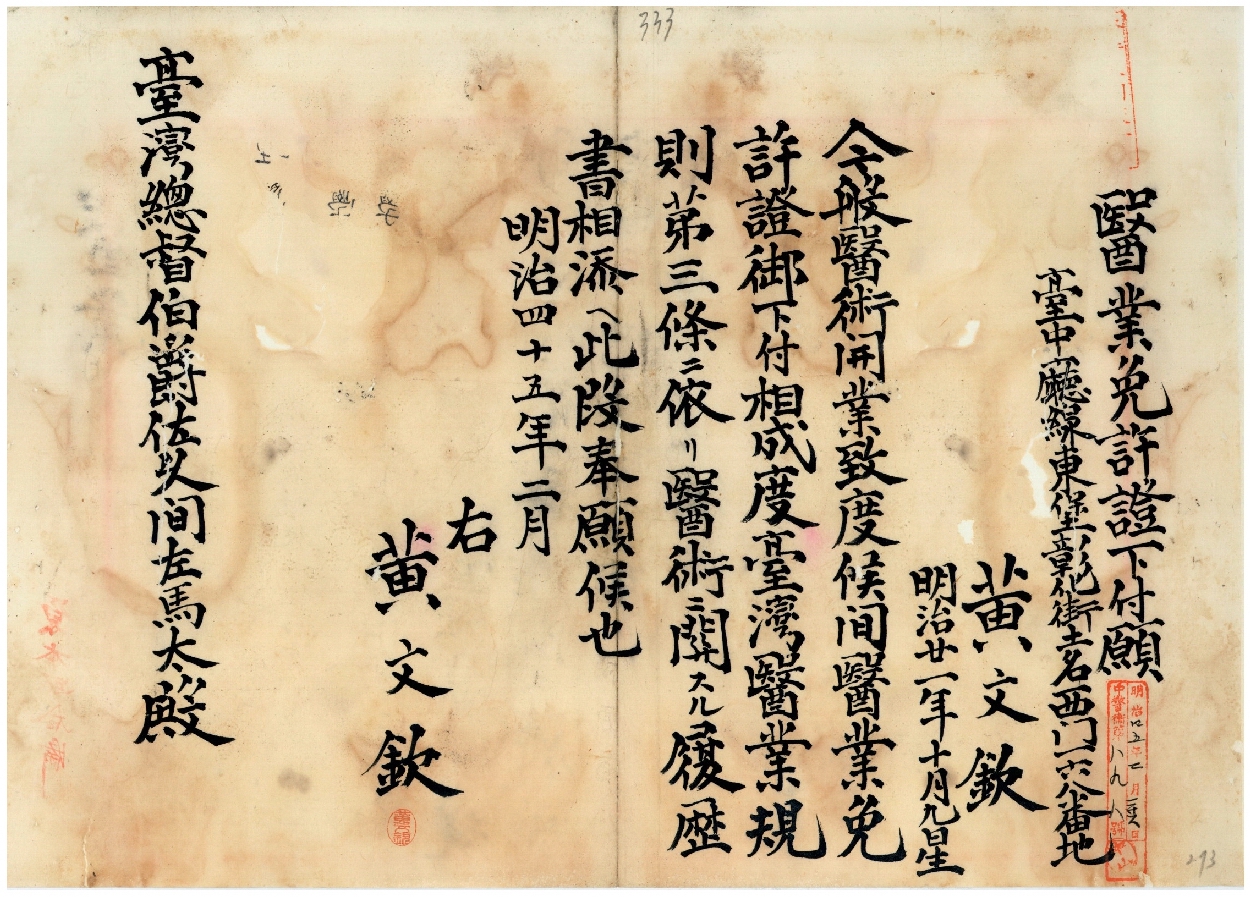 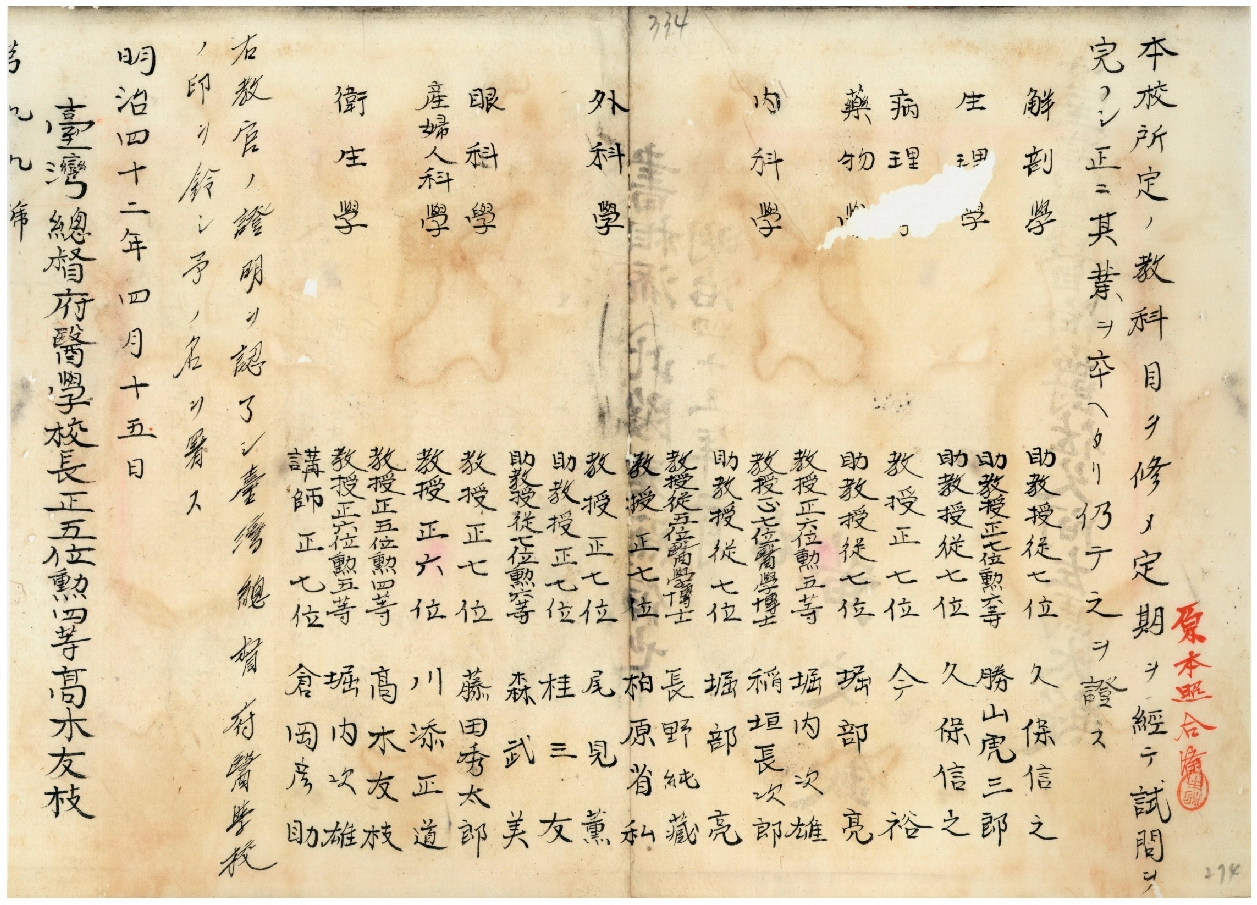 Figure 2: In 1909, Huang Wen-qin, a graduate from the medical school, applied for permission to open his own clinic using his medical certificate and school certificate.
Source: Identifier: T0797_01_007_0252, Official Documents of Taiwan Government-General, Taiwan Archival Information System Through working in public hospitals or operating their own clinics, medical graduates not only accumulated wealth but also earned the public’s respect. Furthermore, many of them became leaders in their communities. Hence, once the Medical School became established, its entrance exam became more difficult and the acceptance rate dropped to lower than ten percent. Indeed, people such as Tu Tsung-ming, Han Shi-quan, and Jiang Wei-shui who entered the medical school became elites in Taiwanese society. In 1919, during the tide of self-determination and nationalism, the Taiwan Government General adjusted its policies by practicing assimilation. It changed the Medical School to make medical education in Taiwan closer to that in Japan. In April 1919, the Medical School was upgraded and changed to the Medical College of the Taiwan Government General. The Medical College required eight years—four foundation years and four years of degree courses—to complete. It accepted graduates from public elementary schools. Although graduates from the college had a formal medical degree from the Taiwan Government General, they could not practice medicine in Japan since the college did not meet the standards of Japan’s medical colleges. In 1922, the new Taiwan Education Order was made and the Medical College was upgraded again. The order stipulated that Taiwanese and Japanese students could study in the same schools and high schools in Taiwan would be same as in Japan. The Taihoku Medical College of the Taiwan Government General required four years of degree courses and accepted both Taiwanese and Japanese high school graduates. Its level was same as the national medical college in Japan. Graduates form the medical college in Taiwan received an official medical degree recognized by the Taiwan Government General. They also received a medical certificate issued by the Home Ministry, which allowed them to practice medicine in Japan. 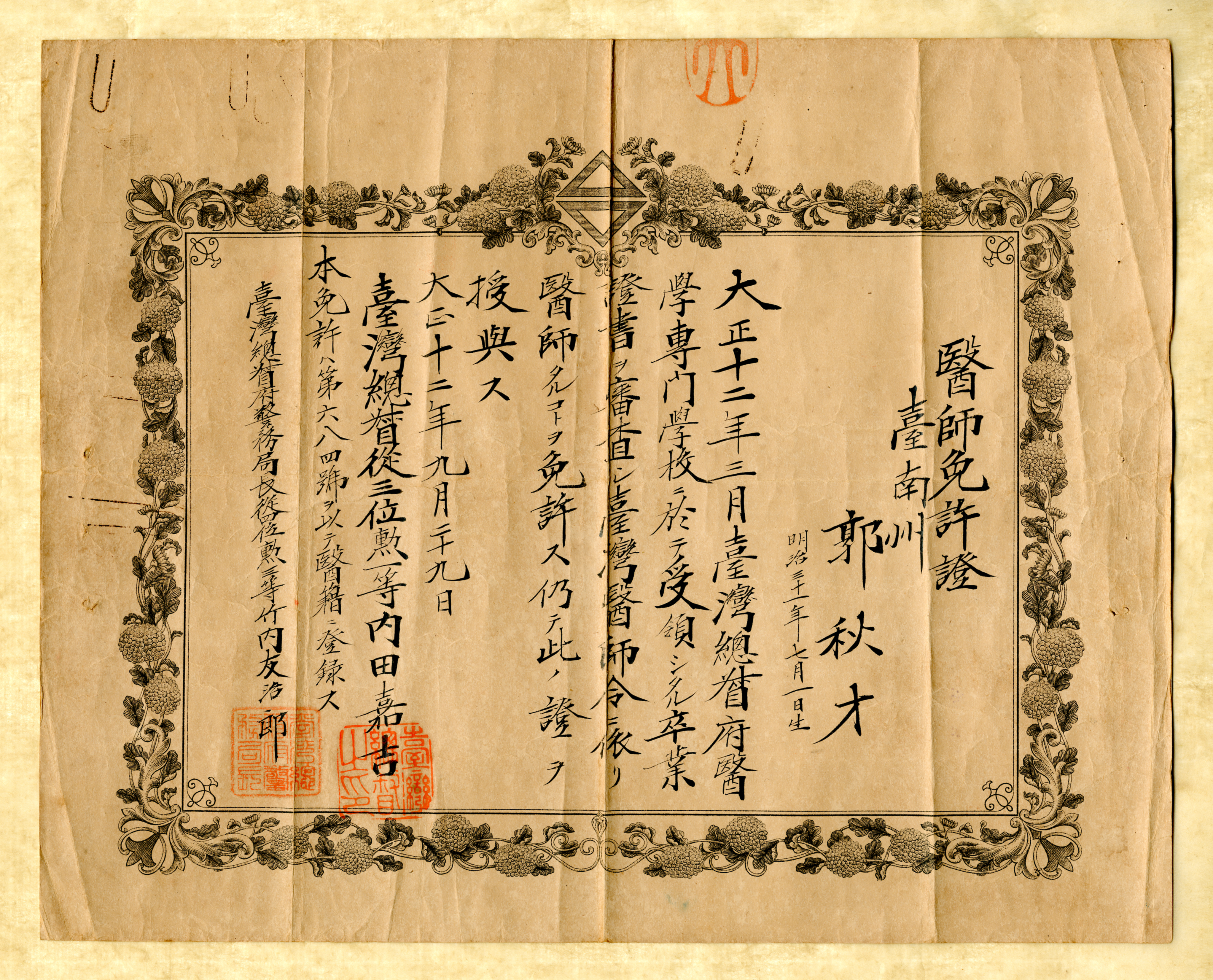 Figure 3: Tainan doctor Guo Qiu-cai’s medical certificate issued by the Taiwan Government General in 1923. Guo Qiu-cai entered the Medical College in 1919 and graduated in 1923. Since the Medical College had not been completely reorganized while he was a medical student, after graduation he took an additional examination to practice medicine in Japan.
Source: Identifier: T073401_01_0003, Guo Qiu-cai Papers, Taiwan Archival Information System In 1936, the Taiwan Government General integrated medical research and education institutes to further develop modern medicine. The medical school of Taihoku Imperial University was established and it accepted high school and preparatory school graduates. This medical school, the most prestigious medical education institute in Taiwan, required students to spend a minimum of four years and a maximum of eight years to receive the degree. At the same time, the Taihoku Medical College of the Taiwan Government General was transformed into an affiliated medical institute of the Taihoku Imperial University. Hence, Taiwan had binary medical education system like Japan, which facilitating credentialism on the island. 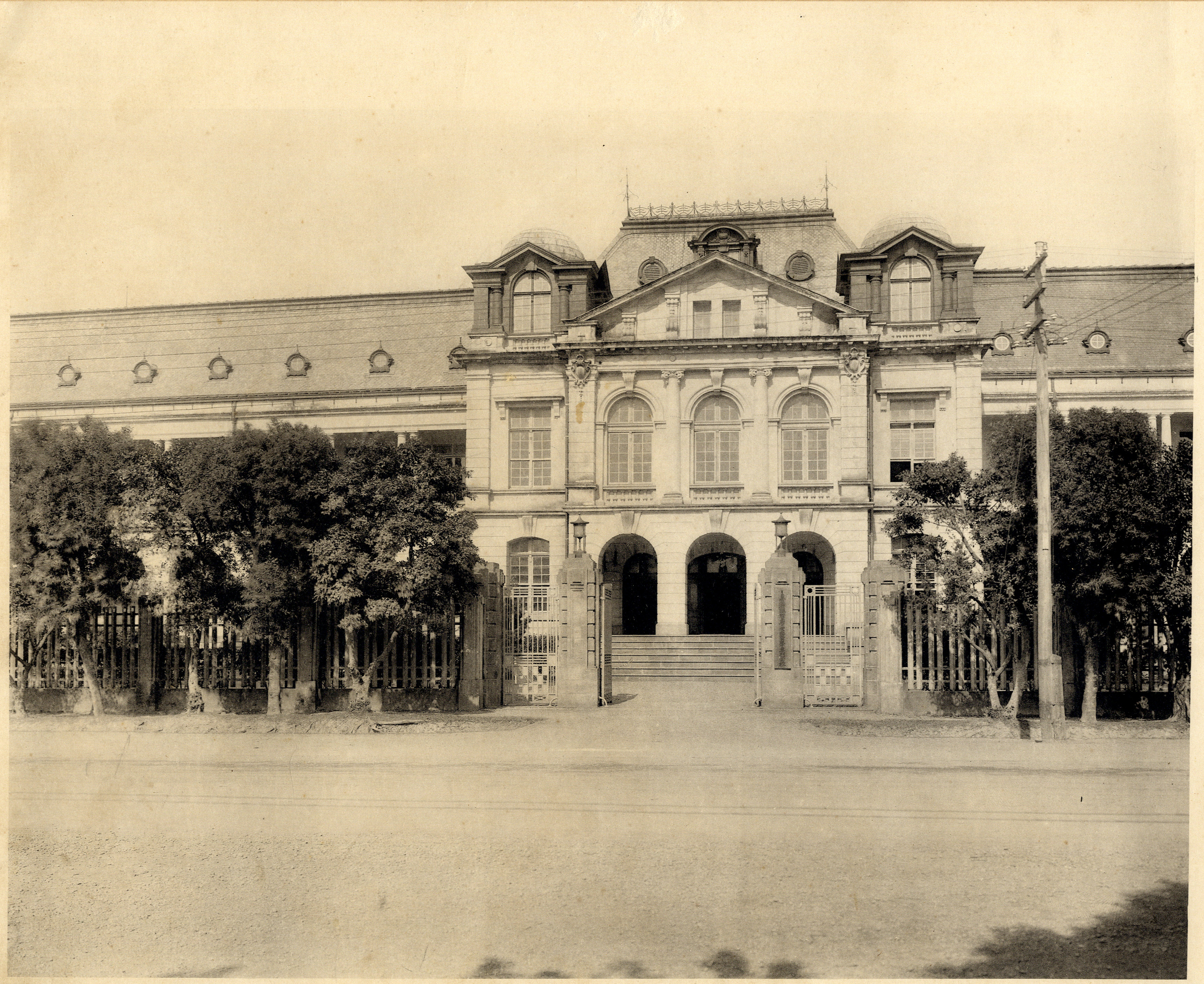 Figure 4: The main gate of the Taihoku Medical College of the Taiwan Government General, 1929. This photo was collected from the 1929 yearbook published by Taihoku Medical College.
Source: Identifier: T0744_0001, Education Records, Taiwan Archival Information System 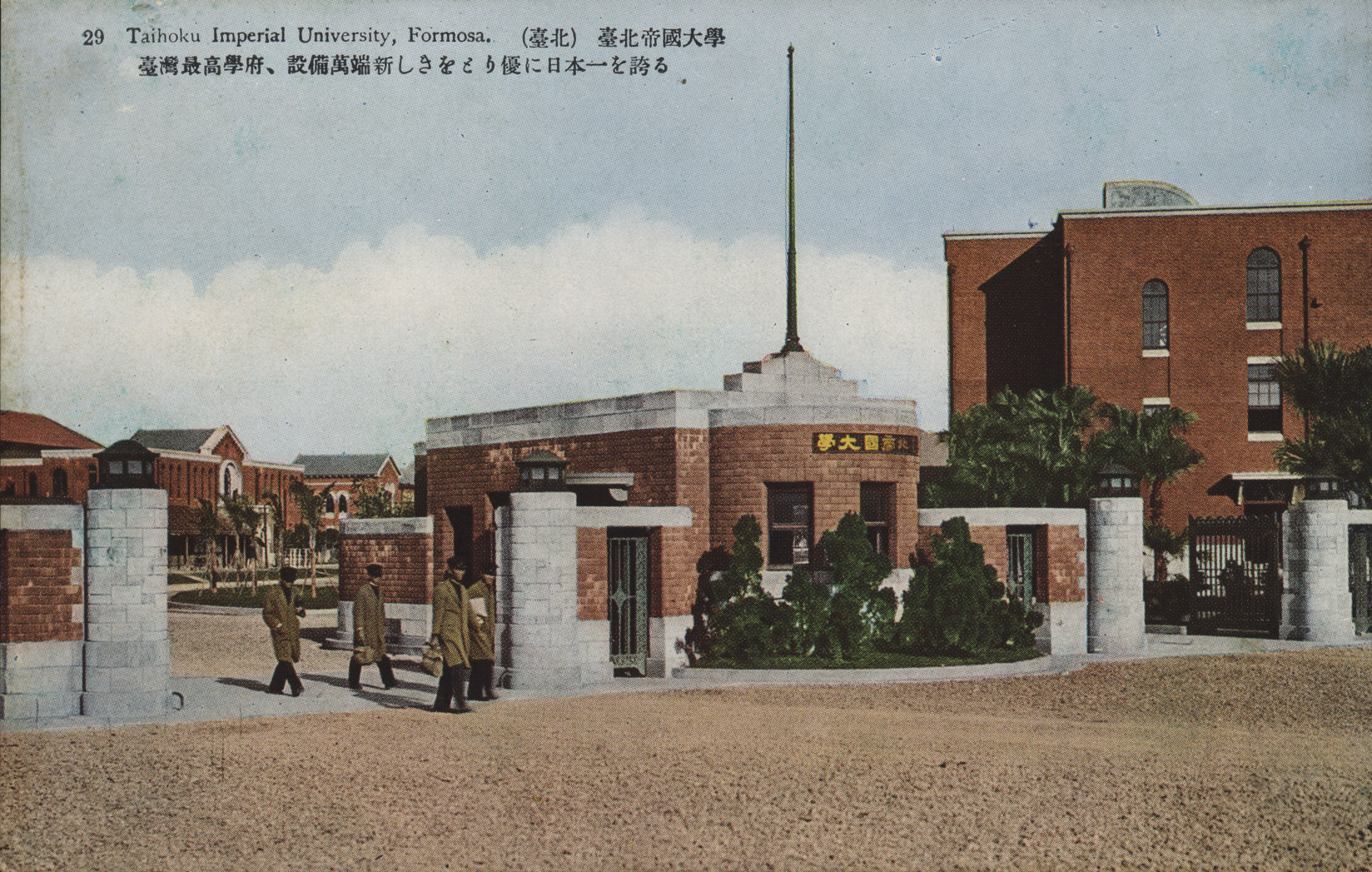 Figure 5: The main gate of Taihoku Imperial University. Established in 1928, it was the most prestigious university in pre-war Taiwan.
Source: Identifier: T0440P0065_3_0030, Scenery Postcards of Taiwan in the Japanese Colonial Period, Taiwan Archival Information System 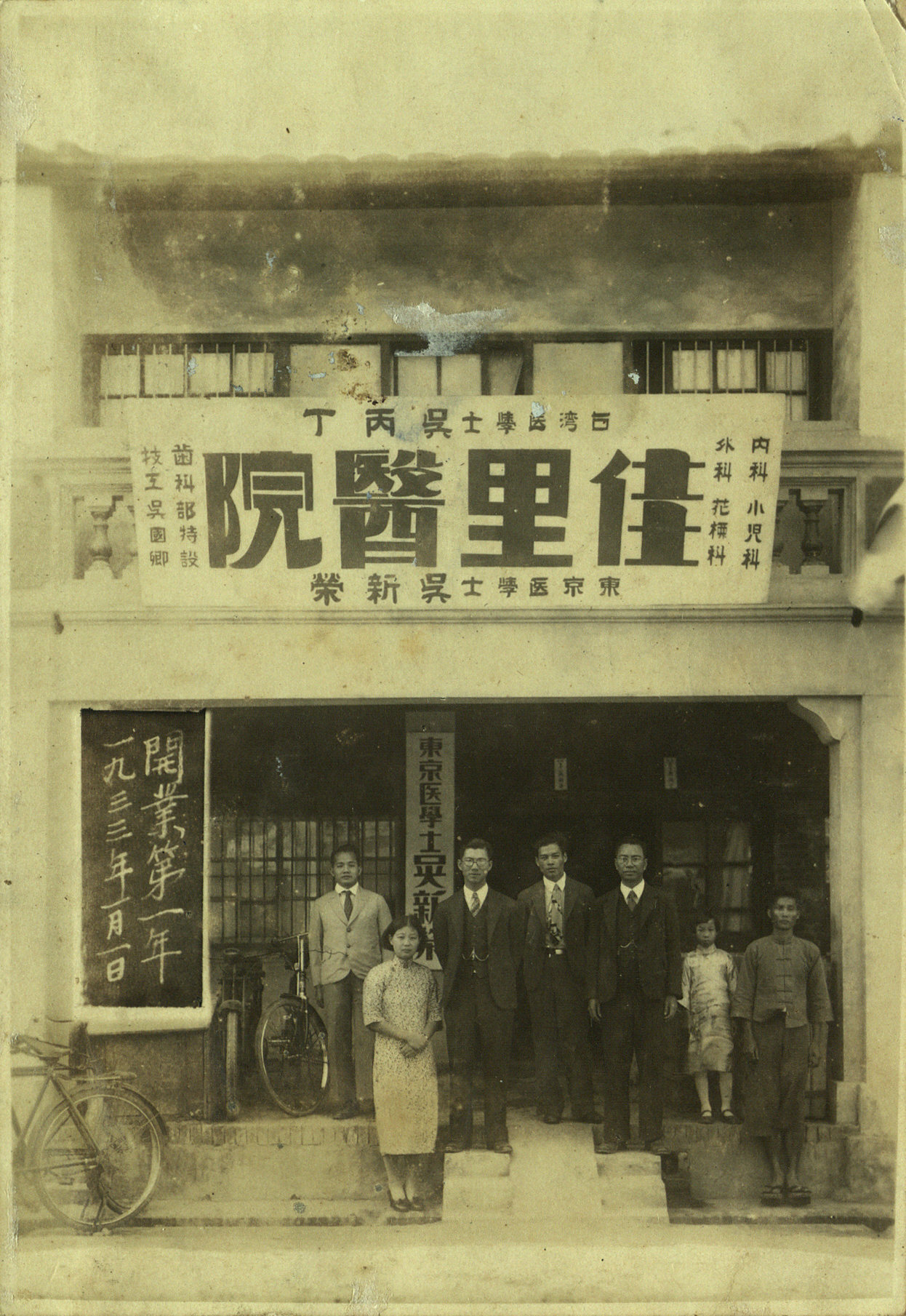 Figure 6: A photo of Jia-li Hospital, which had “Bachelor of Medicine of Taiwan” and “Bachelor of Medicine of Japan” on the signboard. The hospital was operated by Wu Bing-ding, who graduated from Taihoku Medical College of the Taiwan Government General, and Wu Xin-rong, who graduated from Tokyo Medical College. The hospital’s divisions included Internal Medicine, General Surgery, Urology and Gynecology, and Dentistry. Its doctors were generalist and had a close relationship with the local people.
Source: Identifier: 3WXR_01_0002, Wu Xin-rong Papers, Taiwan Archival Information System Since the education level and reputation of the medical school and its affiliated medical institute of Taihoku Imperial University were different, students of the medical school often looked down on students of the affiliated medical institute. After the Taihoku Medical College of the Taiwan Government General became an affiliated medical institute of Taihoku Imperial University, students from the institute complained that their learning resources had been reduced and organized a petition to establish their own medical college. After World War II and the Kuomintang government taking over Taiwan, the medical school of Taihoku Imperial University was transformed into the School of Medicine of National Taiwan University, which remains the highest ranking medical school in Taiwan. However, its affiliated medical institute of Taihoku Imperial University was dissolved. |
 |



